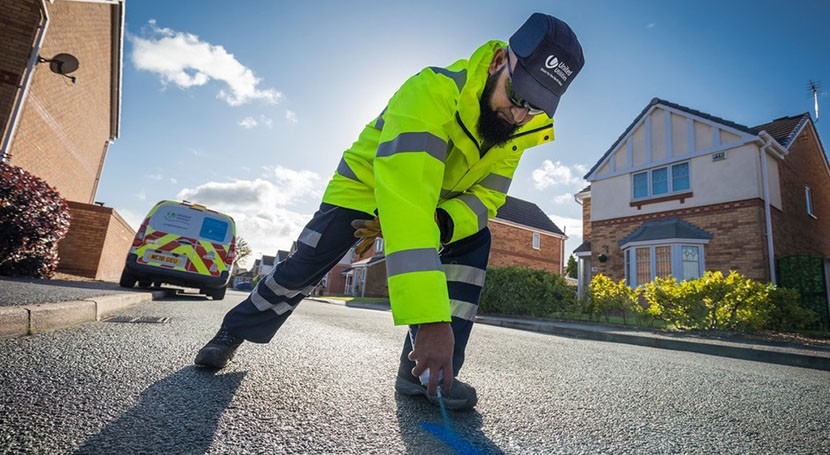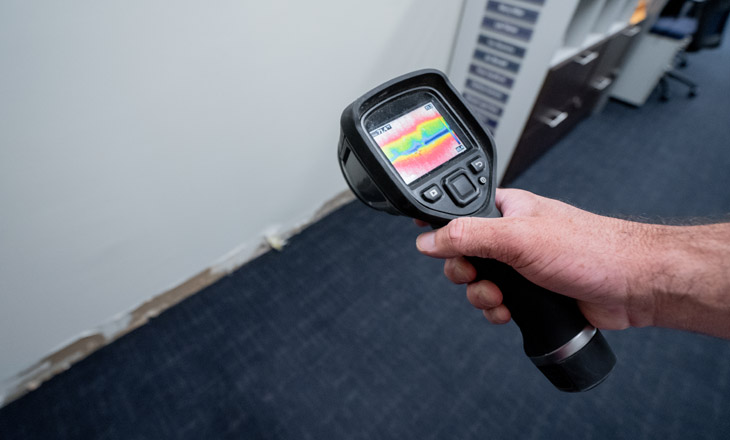Water Leak Detection: How to Determine and Fix Leaks Before They Create Damage
Water Leak Detection: How to Determine and Fix Leaks Before They Create Damage
Blog Article
Ingenious Solutions for Very Early Detection of Water Leaks in Structures and Infrastructure
As the stability of buildings and facilities is extremely important, the challenge of early detection of water leakages has actually stimulated ingenious options that promise to transform the means we secure versus prospective damages. From cutting-edge leakage discovery innovations to the deployment of IoT sensing units for real-time monitoring, the landscape of leakage prevention is progressing quickly. Artificial intelligence algorithms use a look right into the future of leakage forecast, while thermal imaging presents a non-intrusive method for pinpointing covert leakages. Automated water flow analysis systems are reshaping just how leakages are recognized and dealt with, leading the way for a positive strategy to water leak discovery. Each of these options holds the vital to ensuring the integrity and long life of our built atmosphere, motivating a change towards a much more sustainable and effective future.
Advanced Leak Detection Technologies
Advanced leakage discovery innovations, equipped with cutting-edge sensors and formulas, play a crucial duty in promptly recognizing and determining water leaks in various settings. These innovations utilize a mix of acoustic, thermal, and electromagnetic picking up approaches to identify leakages accurately. Acoustic sensing units detect the noise of getting away water, permitting accurate localization of the leakage resource. Thermal imaging spots temperature level modifications brought on by water leakage, offering one more effective technique for leakage identification. Electro-magnetic sensing units can identify changes in magnetic fields caused by water, offering yet another layer of leak detection ability.

IoT Sensors for Real-Time Monitoring
In the realm of modern water leak discovery, the combination of IoT sensing units for real-time surveillance stands for a critical development in improving aggressive leakage discovery capacities. These sensing units supply continual tracking of water systems, supplying real-time data on water flow rates, pressure variants, and temperature level changes. By leveraging IoT modern technology, these sensors can find also the smallest anomalies in water use patterns, enabling very early recognition of possible leakages prior to they escalate right into major concerns.
IoT sensors send data to a centralized system, where sophisticated formulas examine the info and generate alerts or notifications when abnormalities are identified. This real-time tracking capacity allows home owners or facility supervisors to without delay deal with leaks, reducing water damage, lowering repair prices, and saving water sources.
In addition, IoT sensors can be integrated with building monitoring systems, permitting for automated see post responses to identified leakages, such as turning off water shutoffs or turning on pumps to mitigate the impact of leaks. In general, the application of IoT sensors for real-time tracking considerably boosts the efficiency and effectiveness of water leak detection in buildings and framework.
Artificial Intelligence Algorithms for Leakage Prediction

One trick advantage of utilizing artificial intelligence for leak forecast is its capacity to constantly find out and improve its precision gradually. As more data is collected and fed right into the formula, it can refine its predictions and adjust to changing problems, ultimately increasing the integrity of leak discovery systems.
Moreover, equipment knowing formulas can help in determining subtle indications of leakages that may go unnoticed by typical surveillance techniques. water leak detection. By analyzing complicated information embed in real-time, these algorithms can give early cautions and informs, enabling timely treatment and preventative upkeep to minimize possible water damage and associated costs
Utilizing Thermal Imaging for Leakage Detection
Thermal imaging innovation uses an appealing strategy for discovering water leaks in numerous systems and infrastructures. By using infrared radiation and temperature variations, thermal imaging video cameras can identify concealed leaks that are not quickly visible to the naked eye.
One of the vital advantages of click here to find out more thermal imaging for leak discovery is its non-intrusive nature. Unlike traditional approaches that may need getting into walls or floorings to locate leaks, thermal imaging permits for non-destructive testing. This not only conserves time and lowers expenses yet additionally lessens disturbance to the building or infrastructure being assessed. In addition, thermal imaging can rapidly check huge areas, offering a thorough overview of potential leak resources in a timely fashion. In general, using thermal imaging innovation improves the effectiveness and accuracy of water leak detection, making it a beneficial device for maintaining the stability of buildings and facilities.
Automated Water Flow Evaluation Systems
Just how can automated water circulation evaluation systems revolutionize the detection and management of leakages in different systems and infrastructures? Automated water circulation evaluation systems provide a proactive method to leak detection by continually keeping track of water circulation prices and patterns. By establishing standard information, these systems can swiftly recognize variances that may show a leakage, making it possible for prompt treatment to avoid substantial damages.
These systems utilize advanced formulas to examine real-time data and offer instant alerts when abnormalities are found, enabling speedy action to be taken. Additionally, automatic water flow evaluation systems can be incorporated with structure management systems or IoT systems, improving overall performance and enabling remote surveillance capabilities.
Additionally, the information collected by these systems can be made use of for predictive upkeep objectives, helping to recognize possible powerlessness in the framework prior to leakages occur. On the whole, the application of automatic water circulation analysis systems can substantially improve leak detection and management methods, eventually bring about set you back savings, minimized water wastefulness, and boosted sustainability in structures and framework.

Verdict
In final thought, the combination of advanced leak detection technologies, IoT sensing units, device understanding formulas, thermal imaging, and automated water circulation evaluation systems offers this innovative solutions for very early discovery of water leaks in buildings and framework. These technologies make it possible for real-time surveillance, prediction of leakages, and efficient discovery methods to protect against water damage and wastage. Applying these options can assist in keeping the stability and sustainability of water supply in numerous settings.
Report this page